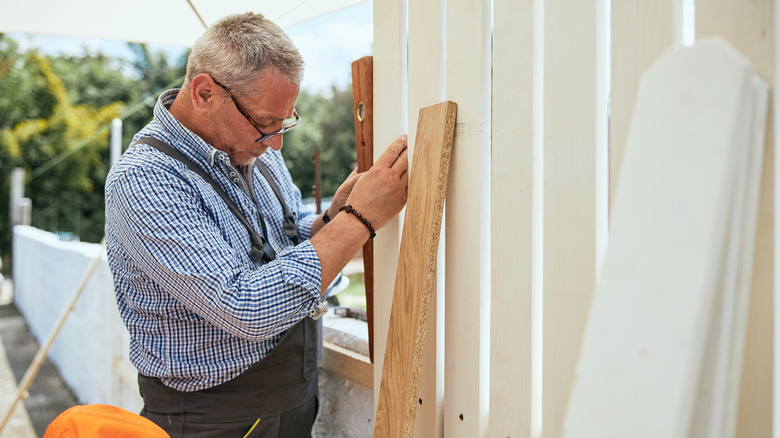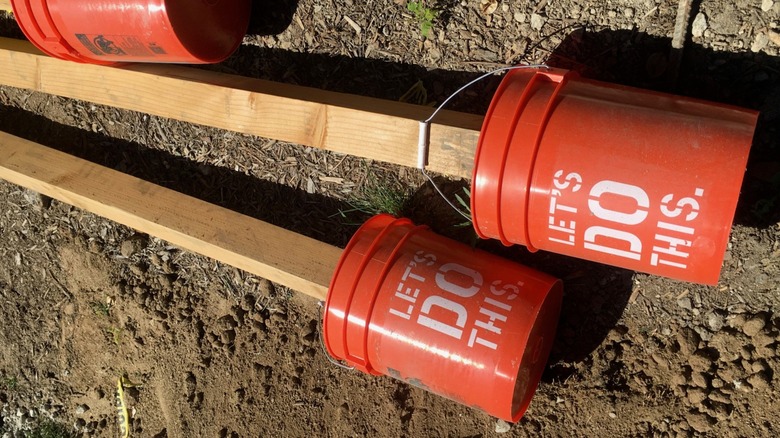The One Trend You Shouldn't Try — Setting A Fence Post In A 5 Gallon Bucket
When it comes to DIY projects, some trends make us wonder, "Why didn't I think of that?" Some others, such as a setting a fence post in a 5-gallon bucket, might lead us to say, "Why would anyone do that?" instead. The concept is clever enough if you're short on time or want to have a portable option for temporary fencing, but the idea crumbles when you look at the practicality of it. Sure, it might be quicker to install, but this approach just doesn't hold up, figuratively or literally.
The main problem with putting a fence post in a bucket is stability — or lack thereof. Fence posts are supposed to stand strong, taking on everything from heavy winds to the ground shifting underneath them. For a fence post to stand securely, the hole should be about 1/3 of the height of the post, with an additional 6 inches at the bottom for a gravel base, since you'll want to use gravel to prevent fence posts from rotting.
This depth ensures the post is firmly anchored and can withstand environmental factors like wind, shifting soil, and temperature changes. Unfortunately, a 5-gallon bucket is far too shallow to achieve this depth. Without that depth, your fence post is at the mercy of Mother Nature — it will lean, wobble, or even topple with the least bit of pressure.
Structural integrity matters more than convenience
Most crucially, posts anchored in short 5-gallon buckets won't sit below the frost line, which is important in avoiding the ground heaving and shifting with changing temperatures. Why is it important to go below the frost line? When the soil above the frost line freezes, it expands due to the increased volume of water turning to ice. This process, known as frost heaving, can exert significant upward pressure on anything embedded in the ground, including fence posts. If a post is not installed below the frost line, this shifting soil can push the post upward or cause it to tilt, destabilizing the entire structure.
Other than depth, the material of the bucket itself is another big consideration. You want to choose fence post materials that are durable and stylish, but plastic buckets aren't made to withstand the type of stress a fence post creates, especially if the fence is often subjected to the pressure of heavy winds. Over time, the bucket can develop cracks, particularly in cold weather and when the bucket is heavily loaded. This will likely result in expensive repairs — or even a safety hazard.
For all the trouble, putting a fence post into a 5-gallon bucket may seem like a simple fix, but it's a fad trend that you should probably avoid. If you want a fence that is durable and will stand the test of time, stick to traditional methods of digging deep, using the proper materials and tools you should have handy when installing a fence, and ensuring the post is firmly anchored.

